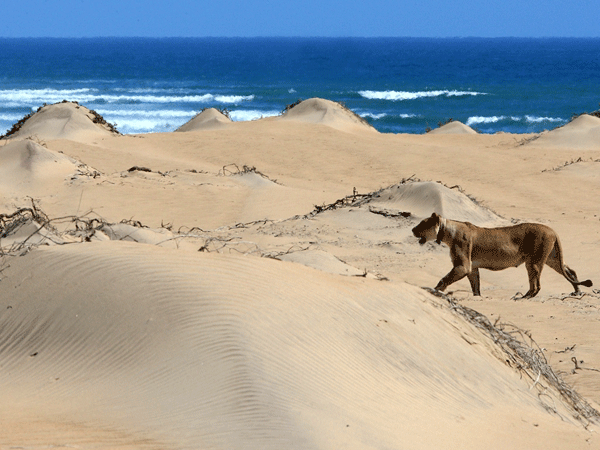It is nothing less than eye-opening to spend time delving into the depths of wildlife conservation in Africa. The development of ecotourism has encouraged travellers to be aware of the roots of their safaris and the environments which present such breath-taking sightings and experiences. Increasingly, there is acknowledgement of the sensitivity of the African soil, the animals that roam upon it, and the human occupants that have, for centuries, depended on it for its natural resources. It is evident that as time passes, this land becomes more and more precious. It begins to run out, as human populations grow and their requirements increase and the mutual ownership by man and beast begins to overlap.
The celebrated power of the lion and the gracious admiration for this Big Cat is a large portion of what attracts visitors to Africa. One can’t help but feel disappointed when a game drive goes by without a thrilling sighting of these golden, maned cats. To watch the protective mothers doting on her cubs is a privilege; proud males laze, unperturbed by the activity going on around them – he knows he can afford to be fearless. The opposite end of the spectrum is that, there has come a time where these creatures should be fearful. Conservationists fear for the lives of lions, as surveys show the shocking decline in their numbers over the last half century. The prognosis is a devastating fact of reality, and without the help of organisations like Desert Lion, the rulers of the pride lands will be no more, and historians will be thankful for ancient rock paintings that tell the tales of these legends.
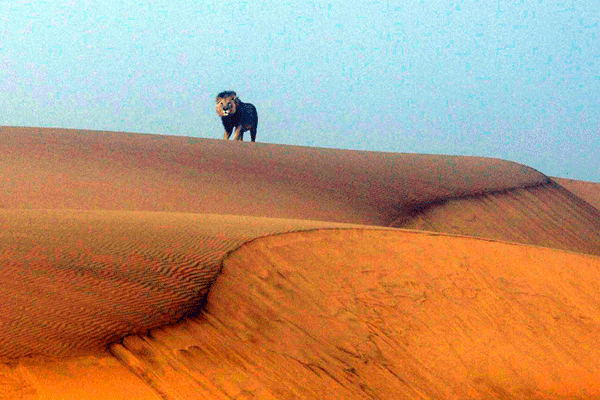
Beginning at the source, upon the sands of the oldest desert in the world and along a coastline only occupied by the remains of ship wrecks, Desert Lion has set out to save the species we have named as king. The Kunene region in northwest Namibia is vastly unexplored and remains remote and sacred. It is the home to a precious few desert-adapted lions left in Africa, who have been tracked, roaming the Skeleton Coast, leaving unmistakable paw prints in the untouched sand since the 1930s. Nearing the brink of extinction, this population of lions was limited to just 20 in the 1980s when Dr Philip Stander stepped in and began a passionate effort to save this unique species. Using donations that kept his land cruiser cruising, and adopting a life of fieldwork, Stander dedicated his time to the desert. Over the last 30 years, substantial development has taken place within Desert Lion, while communication, education and training continue to transform the future of this threatened species.
Three objectives have dictated the direction of Desert Lion Conservation: collecting ecological data of the lions in order to monitor their movement and record their demographics; managing human-wildlife-conflict, which substantially contributes to the terrifying demise of lions throughout Africa; and implementing ecotourism initiatives in order to benefit the communities who share the Kunene region with the Big Cats. Despite the uplifting success that Stander has had in increasing the number of lions from a pitiful 20, to 130, the challenges of working with a community of fearful and angry people has had devastating consequences. Although livestock only constitutes around 2% of the lions’ diet, each individual cow represents financial wealth to the family who owns it. Losing crops to the unintentional, yet destructive, ploughing of elephants and losing cattle to the tempted hunger of a lion is understandably infuriating. Shooting, poisoning and snaring – either in retaliation or anticipation of an attack on livestock – has become such a problem that it is contributing heavily to the demise of lions.
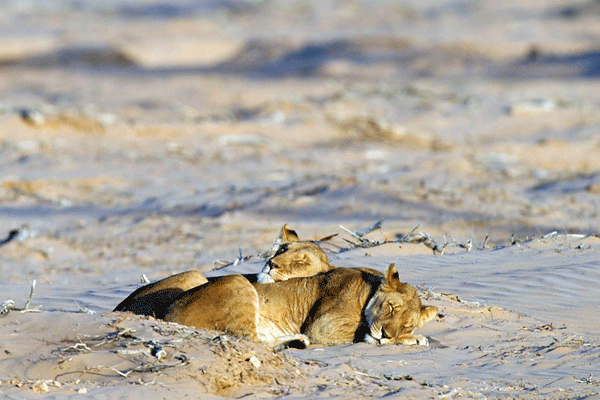
Desert Lion has resourced and implemented three strategies to combat the rivalry between the Kunene’s rural farmers and roaming lions. Paving the way for the harmonious existence of the two groups, this dedicated organisation has gathered the help of powerful players invested in the value of these animal kingdom leaders. Sharing territory with lions creates difficulties in the sense that predator and prey are likely to cross paths, and being instinctive as they are, a hungry lion would pounce at the opportunity to take down a slow moving bovine. Satellite collars allow for Stander and his team to track the movement of the lions and sound the alarm, should the cat be prowling too close to the cattle’s grazing area. The aim here is to alert designated members of the conservancies when the lion’s proximity is within 10km of the herd. The result is that, via communication, the two parties need not meet and a dangerous and detrimental interaction is avoided, therefore, saving the life of possibly the shepherd, the cattle and the lion.
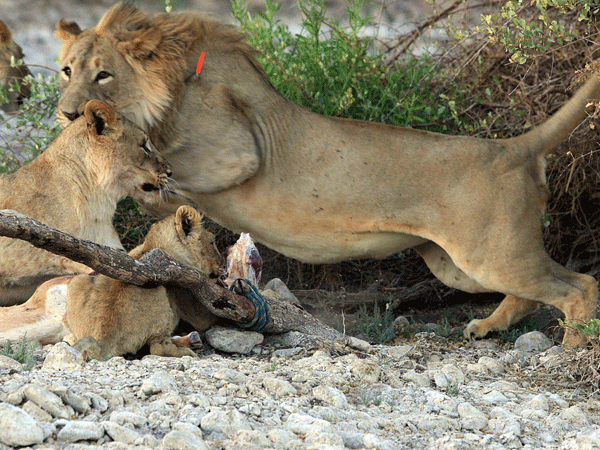
Another hugely successful initiative that promotes more than just the survival of lions is an idea that was born in the headquarters of TOSCO (Tourism Supporting Conservation). ‘Lion Guardians’ are local members of the Kunene conservancies who are trained by Desert Lion to respond to lion alerts and provide an early warning to herders of the potential threat to livestock. Lion Guardians also build and reinforce cattle kraals or bomas, which keep the domestic animals in and carnivorous hunters out – a method that has had undeniable success in East Africa. On occasion, cattle wander off in the dark, at which point Lion Guardians would be called in to search for the lost individuals and recover them to safety before they are sniffed out by the night-stalking lions. Again, this noble job boasts an 86% success rate where it has been put into practice in Kenya. These appointed defenders protect the wealth of their communities. They are trained to detect and respond and are paid a salary in return for their work – a concept that has turned the lion from a threat into an opportunity.
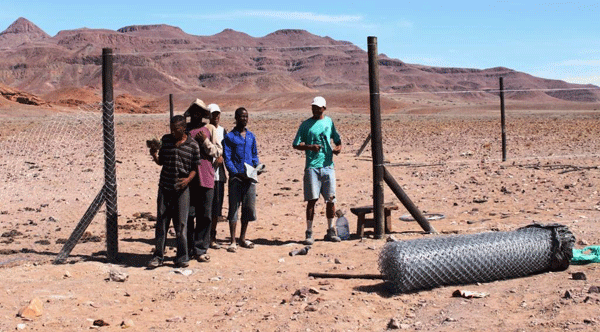
The notion of the African wild creates depictions of far-reaching deserts and rolling savannahs where animals roam free and tribal communities live off the land, practising age-old traditions and following the rains to nourish their land. Without borders and boundaries, the sense of a rural wilderness is what we may think is ideal, but with less space to share and a wealth to protect, this arrangement no longer works and the king of beasts is losing to mankind. The killing off of Africa’s lions in order to defend the people is a crucial issue facing the survival of the species, but there are solutions and there are alternatives that will rescue the plight of lions and prevent the devastating aftermath that will be, should Africa lose its king.
Desert Lion Conservation stepped in not a moment too soon and brought the Kunene lion population to a less critical status, but this is a battle that faces constant challenges and it is a battle that requires unity. The message that needs to be heard is that by protecting the lion, we are protecting the people. It is necessary for the lions in northwest Namibia to exist for ecological, historical and economic reasons. Here, Desert Lion provides us with the tools to enjoy the unique deserted beauty of Namibia, to uplift local communities and the help save the iconic lion from extinction.
Interested parties are encouraged to contact Desert Lion or TOSCO and partake in this multi-beneficial initiative by sponsoring a Lion Guardian.
Chloe Cooper
Desert Lion Conservation is Saving the Lions of the Skeleton Coast.
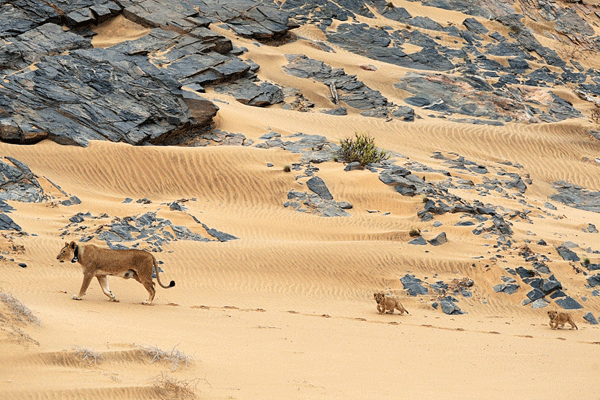

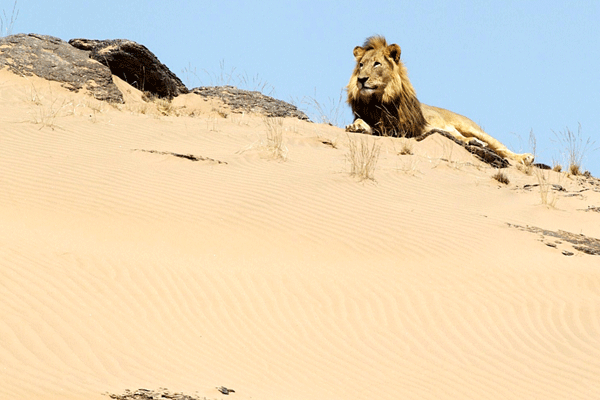
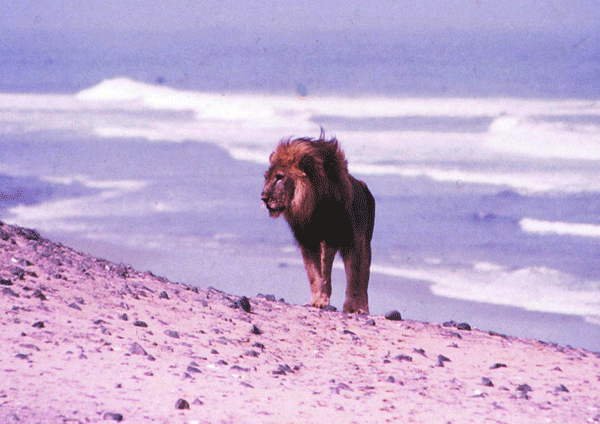
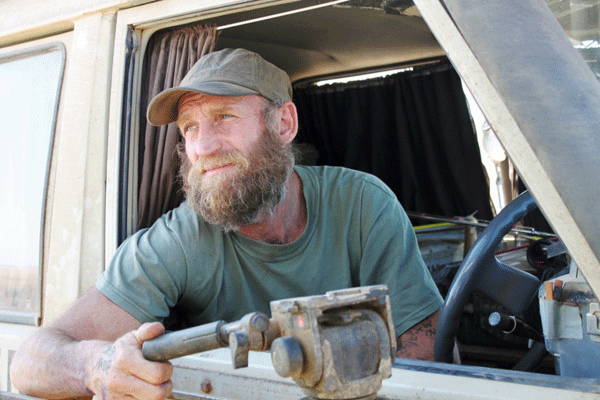
(Image copyright Desert Lion Conservation)

